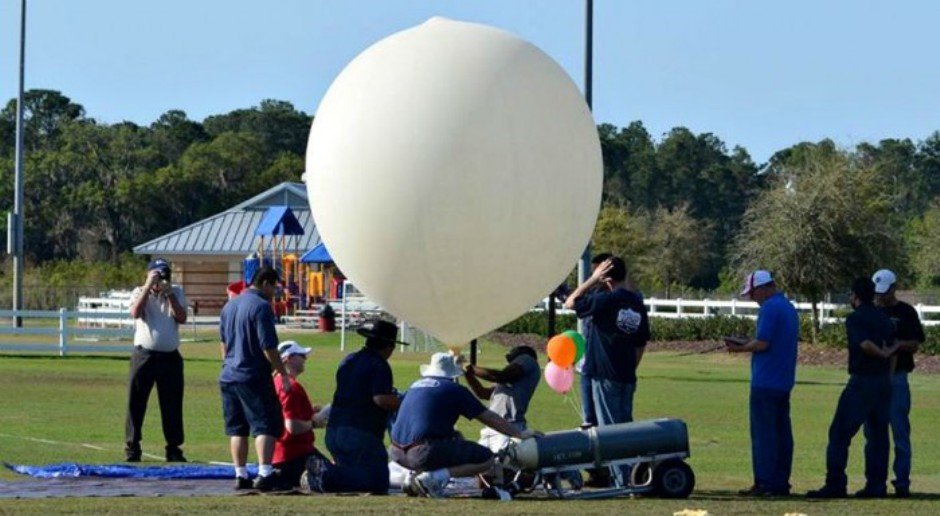For the first time in 50 years mysterious unearthly sounds were recorded from the edge of space. A NASA student captured these sounds with his balloon using infrared microphones.
Daniel Bowman, a graduate from the University of North Carolina designed and built equipment that recorded these eerie sounds. Mysterious hisses and whistles were heard at 22 miles (approx 36km) above the Earth’s surface.

The instrument picked up sound waves that were below frequencies of 20 hertz. Such sounds are below human hearing range, but can be heard by human ears by speeding up the recordings.
Infrasonic sound travel long distances. Natural occurrences like storms, earthquakes, volcanoes, avalanches and meteors all can cause infrasounds. ‘It sounds kind of like The X-Files,’ Bowman told Live Science.
The researchers are still not able to figure out the source of these sounds.
Bowman’s equipment was a helium balloon and the infrared microphones dangling from the balloon. Last year on 9th August he released the balloon above New Mexico and Arizona as a part of the High Altitude Student Platform (HASP) study.
The balloon went 450 miles across the Earth’s surface and 123,000ft (37,500 meters) high in its 9 hours of flight. The balloon reached 62 miles (100km) above the Earth’s surface a region in space above where airplanes fly but below the boundary marking the top of the stratosphere. No infrasound device has ever reached so high.
Scientists are not sure about the sources of the sounds only guesses are been made so far. They had never heard many of stratospheric signals.
They say it could be the ocean waves, wind turbulence, gravity waves, from wind farm below the balloon’s flight path or the vibrations caused by the balloon cable.
Another HASP balloon launch is scheduled this year. Scientists are hoping to get more information then. Jonathan Lees, Bowman’s faculty adviser with Bowman wants to record infrasound above an erupting volcano.
Scientists are even thinking of sending infrasound sensors to Mars and Venus to detect the unusual weather or earthquakes by the microphones.
Omar Marcillo, a geophysicist at Los Alamos National Laboratory in New Mexico pointed out that the natural infrasound signals will be clearest in the atmosphere.
He said that the atmosphere refracts some of the sound waves away from the ground and some infrasonic sounds never reach the ground. High in the sky the interference of other noises will also be little.

“I think this work has opened new ground for more research,” said Omar Marcillo, a geophysicist at Los Alamos National Laboratory in New Mexico, who was not involved in the study.
“It’s very important for the entire [infrasound] community.”











